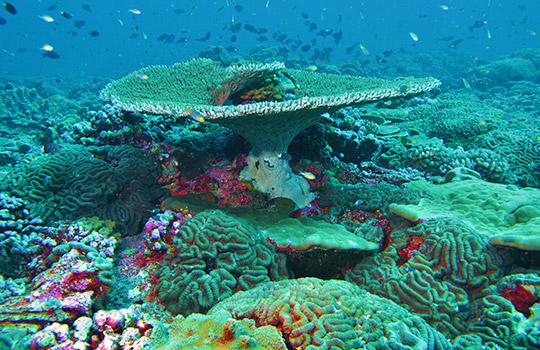Coral reefs support over 500 million people around the world by providing food, income, coastal protection, and more. They provide over $375 billion per year in goods and services. And despite only covering 0.1% of the earth’s surface, they contain the highest number of species of any ecosystem besides rainforests.
They also play a vital role in medical research—scientists have developed treatments for cardiovascular diseases, ulcers, leukemia, lymphoma, and skin cancer all from chemicals in reef plants and animals. And more than half of all new cancer drug research focuses on marine organisms, many of which are found on coral reefs.
To ensure people and wildlife can continue relying on the lifesaving services coral reefs provide, we need to reduce threats to reefs.
If corals are bombarded by stressors like poor water quality, a marine heatwave, or overfishing, their energy will be directed at survival instead of reproduction. To ensure the future of coral reefs, we must keep corals healthy so they continue to reproduce—and we have to do this in strategic areas around the world.
Because ocean currents tend to follow the same course, one coral reef can be genetically connected to another coral reef hundreds of miles away—one coral reef will provide the baby corals, and the other coral reef will provide the home upon which the larvae settle. When one coral reef becomes too overcome by local stressors, it could affect other coral reefs that are far away.
But this connectivity could also save coral reefs: if one coral reef is kept healthy and over time adapts to climate change or other stressor, it could spread those better-adapted traits to other coral reefs through the movement of coral larvae. The key is keeping coral reefs healthy in the areas where corals are adapting and in the areas where the adapted corals are settling.
